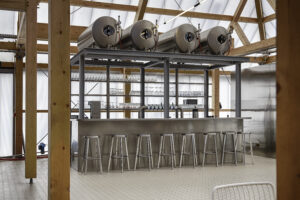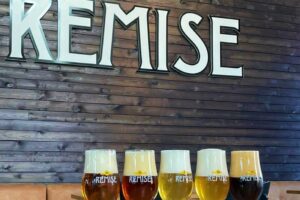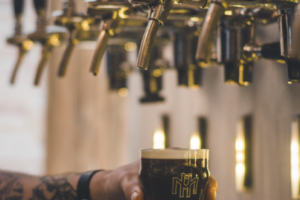As a brewer, you want to make sure your customers get the optimum experience when they order your beer in a bar.
Duotank beer tanks rely on inliners, which are essential components that ensure the system’s reliability and user-friendliness. Despite their importance, many people are still unsure about what inliners are and how they function. In this blog post, we will delve into the details of inliners and highlight the benefits they bring to tank beer systems.
How an Inliner Works
An inliner is essentially a plastic bag placed inside a tank to hold beer. Duotank’s inliners are crafted entirely from (L)LDPE and include an EVOH barrier. This material combination prevents oxygen from coming into contact with the beer, ensuring it stays fresh. The inliner’s connector clicks into the tank’s exit, and when the piercing unit is inserted, it forms an airtight seal. This design guarantees that no oxygen can reach the beer, maintaining its quality.


How to Use an Inliner
Before filling a tank, the inliner is first unpacked and its connection is disinfected with alcohol. It is then attached to the tank’s exit and rolled out to its full length, allowing beer to flow easily and the inliner to unfold smoothly. After securing the manhole, air pressure (counter pressure) is applied to the tank.
The tank can then be filled, typically from a transport tank in a beer delivery truck. The smooth flow of beer ensures the inliner unrolls automatically without breaking. Once the tank is filled, it’s connected to the tap, and the beer is ready for customers to enjoy!
After the Inliner is Used
Inliners are designed for single use, meaning they need to be replaced with each new filling. Recognizing this, Duotank has prioritized making this component more sustainable. Made from a single type of plastic, Duotank inliners are fully recyclable.
To facilitate recycling, Duotank provides an extra bag for the used inliners, along with a shipping label to send them to a collection point. The used inliners are then recycled, and upon request, you can receive a certificate verifying this process. Currently, regulations do not permit the recycling of used inliners into new inliners. However, the recycled material is repurposed into other plastic products, giving the inliners a second life.

Recent articles
Blog: Using compressed air instead CO2
As a brewer, you want to make sure your customers get the optimum experience when they order your beer in a bar.
Blog: Deconstructing a beer tank and how they work
As a brewer, you want to make sure your customers get the optimum experience when they order your beer in a bar.
Blog: the basics of a tankbeer system
As a brewer, you want to make sure your customers get the optimum experience when they order your beer in a bar.
Blog: inner city draught beer delivery
As a brewer, you want to make sure your customers get the optimum experience when they order your beer in a bar.
Duotank Australia: 15 years of unpasteurized tankbeer excellence
As a brewer, you want to make sure your customers get the optimum experience when they order your beer in a bar.
Blog: Factors that influence the freshness of beer
As a brewer, you want to make sure your customers get the optimum experience when they order your beer in a bar.
Winners of the best CSR/Sustainability initiative award
As a brewer, you want to make sure your customers get the optimum experience when they order your beer in a bar.
Case study – Remise 56 Copy Copy
As a brewer, you want to make sure your customers get the optimum experience when they order your beer in a bar.
TANKBEER – Matthias Kopp
As a brewer, you want to make sure your customers get the optimum experience when they order your beer in a bar.







